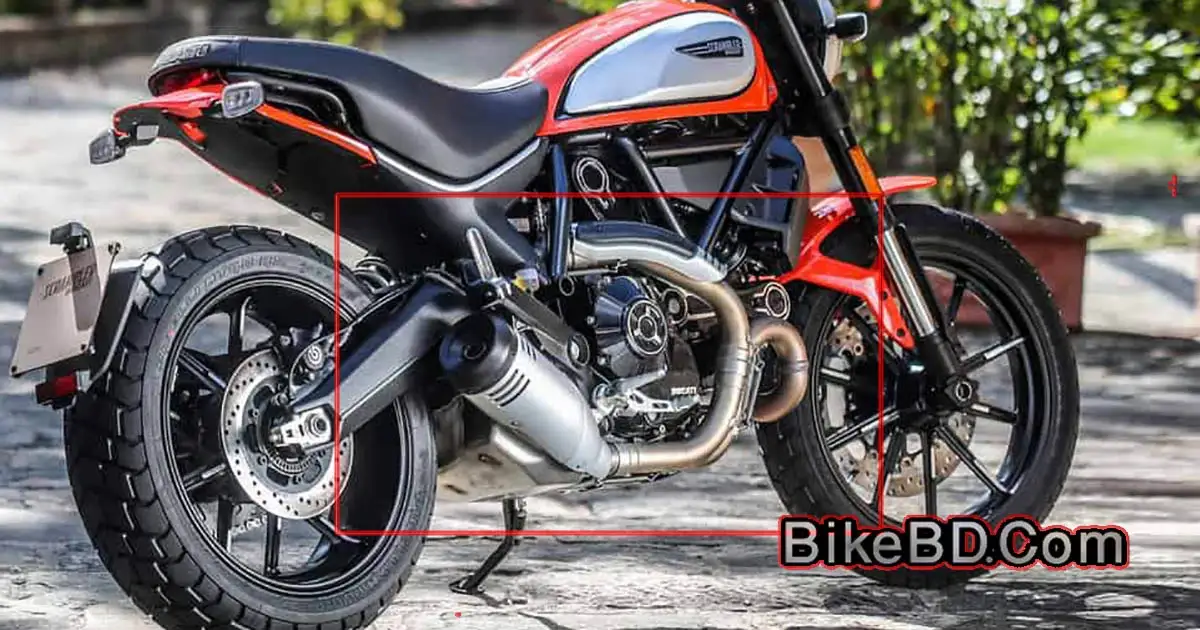Shares 2
Aftermarket Exhaust System - Know Before You Install
Last updated on 01-Aug-2024 , By Saleh
Aftermarket Exhaust System - Know Before You Install Details:
We ride motorcycles for many reasons. Some people ride to meet daily life necessities and some people ride for fun and excitement. Hence, those who are fun lover, often modify their motorcycles with aftermarket performance parts. In such a case modifying a motorcycle with an aftermarket exhaust system is a very common and popular type of modification globally among the motorcycle users. Consequently, here we will focus on the aftermarket exhaust systems and the related concerns that you should know before you install them.

Aftermarket Exhaust System - Know Before You Install
Installing an aftermarket exhaust system on motorcycles is a very popular and easy modification to enhance their performance, sound, and aesthetics. Perhaps the performance enhancement is not very significant in terms of a single-phase modification but most of the riders love that excitement boosting the exhaust note and crisp throttle response. However, even though it is a simple job, modification with an aftermarket exhaust system is related to some vital concerns. So here we have put our focus below on those.
Basic Info About Aftermarket Exhaust Systems
An aftermarket exhaust system actually is a replacement exhaust system for a motor vehicle or motorcycle's factory-installed stock exhaust system. The stock exhaust systems commonly come with a combination of various components like the headers, catalytic converters, bend-pipes, exhaust mufflers, and exhaust tips. On the other hand, aftermarket exhaust systems replace those stock exhaust components partially or entirely which are designed to improve the flow of exhaust gases from the engine.

This characteristic significantly helps to enhance the motorcycle's performance, especially in terms of the throttle response, quicker acceleration, gaining top speed, fuel efficiency, and sound improvement. However, aftermarket exhaust systems are available in various types considering their replacement features. Consequently, the cat-back, axle-back, and header-back systems are common replacement exhaust types that offer different levels of performance improvement and installation complexity.
Performance Improvements
One of the key reasons motorcycle enthusiasts go for the aftermarket exhaust system installation is performance improvement. By reducing the back pressure and free-flow of the exhaust gas, the aftermarket exhaust systems can improve the throttle response, allow quicker acceleration, and unleash a few amounts of horsepower & torque, particularly at higher RPM riding conditions.

Additionally, aftermarket exhaust systems are sophisticatedly designed and made of lighter-weighted materials. Thus, aftermarket exhausts are significantly lighter in weight, and those benefit from reducing the motorcycle weight by replacing the stock exhaust system. Consequently, it has an indirect effect on the overall handling and performance of motorcycles. Lastly, these performance exhausts also have direct and indirect impacts on overall fuel efficiency and it improves fuel economy.
Sound Enhancement
Aftermarket exhausts are comparatively much louder than factory stock exhaust systems. Those exhaust systems are also popular for their ability to produce an aggressive and exhilarating exhaust note which often reminds the track racing bikes. Therefore, the riders who like the deep rumble, a throaty growl, or an ear-piercing roar from their exhaust system, aftermarket exhausts suit their motorcycle better. On the other hand, the louder exhaust is often annoying and hated by peace lover civilians as it greatly contributes to sound pollution.
Legal Considerations
Installing aftermarket performance components to a motorcycle is also subject to void the official warranty and guarantee scheme of a motorcycle. Moreover, the manufacturer also may have some specific guidance to follow to make any type of aftermarket modifications. Furthermore, this type of exhaust system is often illegal to use in some regions due to its louder sound and emission standard. So, before installing an aftermarket exhaust system, one should be confirmed about the local regulations and also be caring about the manufacturer's recommendations.
Installation and Tuning
Installation and tuning also is an issue in case of modification of the stock exhaust system with an aftermarket exhaust system. Commonly, some aftermarket exhaust systems are designed for straightforward bolt-on installation, but some others may require major component removal and welding bend pipes or technical custom fabrication. Moreover, fuel supply adjustment, ignition control, and ECU remapping also may be required in some cases. Therefore, the installation, modification, and tuning of the aftermarket exhaust system should be done under the supervision of a professional mechanic.
Cost Considerations
Every performance modification obviously is related to the cost and often that goes beyond the budget. Installation of aftermarket exhaust system is comparatively an easy modification but it may require some additional costs. Usually, a quality exhaust system which is properly designed and features controlled noise levels and complies with the highest emission standards is not cheap at all.
Moreover, stock component removal, modification, installation, and custom fabrication may require a whole lot of money. However, proper tuning and tweaking of related components also may require supportive modification, upgrade, or calibration which also require more money. Therefore, before you attempt for such modification you should be ready to spend which often may go beyond your expected budget.
So, installing an aftermarket exhaust system on a motorcycle can be a rewarding upgrade if it is done properly with a proper exhaust system. Then it will provide improved performance, pleasant sound, and enhance overall aesthetics. However, it is crucial to thoroughly check and consider the related legal aspects, compatibility, outcome, and cost factors before making such a modification. Otherwise, it’s better to stick with the factory stock exhaust system and enjoy riding; thanks.
T
Published by Saleh











